When compared against soybean meal, canola meal not only holds its own but often produces measurable advantages in feed efficiency and milk production.
Recent academic studies have demonstrated canola meal consistently delivers feed value through several key benefits.
1. Good palatability. Cows readily eat canola meal, which results in excellent dry matter intake, especially in early lactating cows.
In a recent study conducted by Kenneth Kalscheur at the U.S. Dairy Forage Research Center in Madison, Wisconsin, cows fed rations containing canola meal got off to a better start.
For the first 16 weeks of lactation, cows were given diets based on either canola meal or soybean meal. The study also tested two levels of protein.
At both protein levels, rations containing canola meal supported higher milk production and feed efficiency than rations containing soybean meal (Table 1).
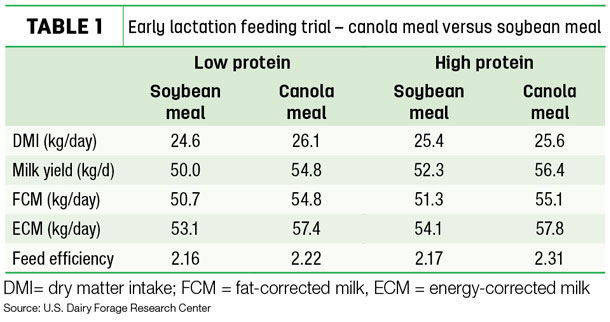
2. Ideal amino acids. The amino acid profile of canola meal is superior to most other plant proteins, including soybean meal, so there’s no need to over-supply metabolizable protein. That makes canola meal a good value.
Figure 1 compares the amino acid profiles of different types of meals to the amino acids needed for milk protein synthesis.
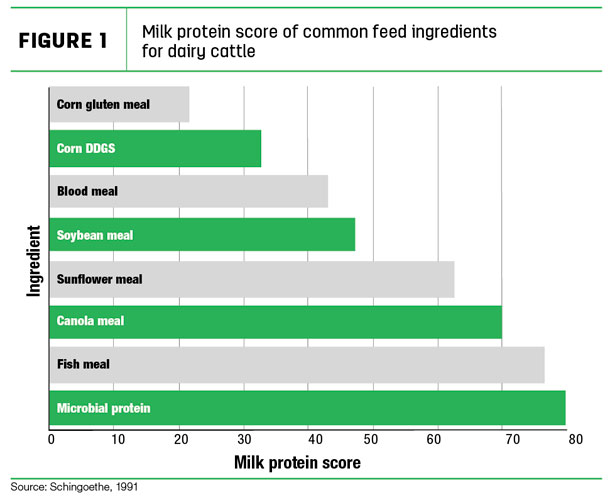
Of all types of plant-based meals, the amino acid profile of canola meal is by far the closest to that of microbial protein.
3. More bypass protein. As a percent of total protein, canola meal has more rumen-undegraded protein (RUP) or bypass protein than soybean meal (Table 2).
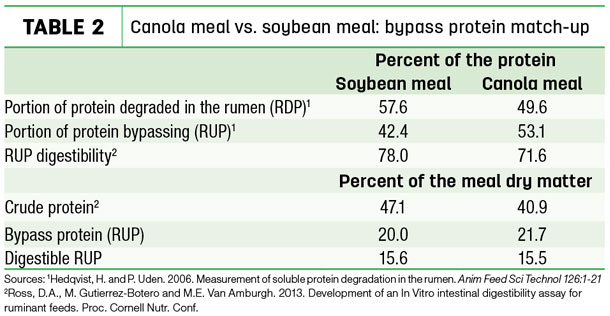
While it may not beat all other protein sources in crude protein levels, a high portion of canola meal’s protein makes it through the cow’s rumen.
That makes more protein available to the cow for milk production, resulting in less protein wasted in the manure pile.
Feed trials have also shown lower milk urea nitrogen levels in cows fed canola meal rations, which translates to more efficient use of crude protein.
4. Complements DDGS proteins. Dried distillers grains with solubles (DDGS) can be used to provide protein in a ration, but the feedstuff has a poor amino acid profile. So when using DDGS in a ration, additional metabolizable protein needs to be supplied.
The protein in canola meal complements the protein in DDGS. Studies have shown feeding a ration of one-third DDGS and two-thirds canola meal delivers performance results nearly as good as feeding canola meal alone (Table 3).
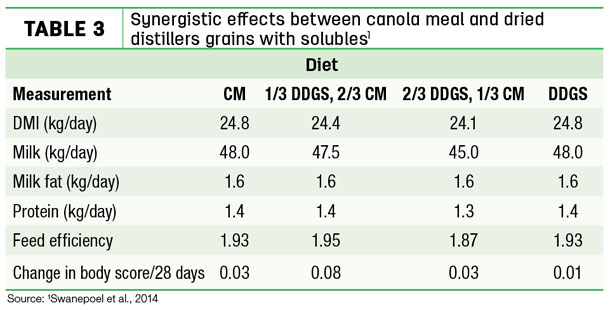
5. Good source of phosphorus. Because phosphorus is a very expensive mineral, the fact canola meal is a better source of it than most vegetable proteins (Table 4) means less additional phosphorus is required in the mineral mix. That adds to the overall value canola meal delivers.
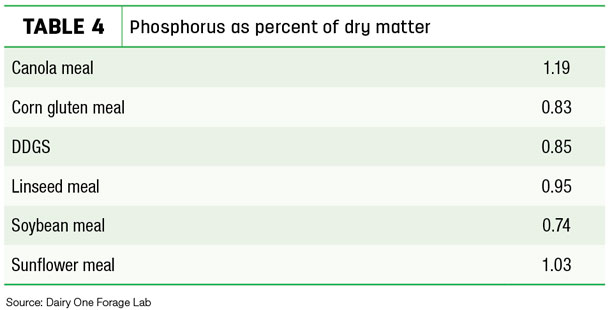
6. For all cows. Canola meal can be used to feed dry or lactating cows, as well as growing heifers, so you don’t need to save it for the milking herd. ![]()

-
Essi Evans
- Technical Advisory Services Inc.
- Email Essi Evans









